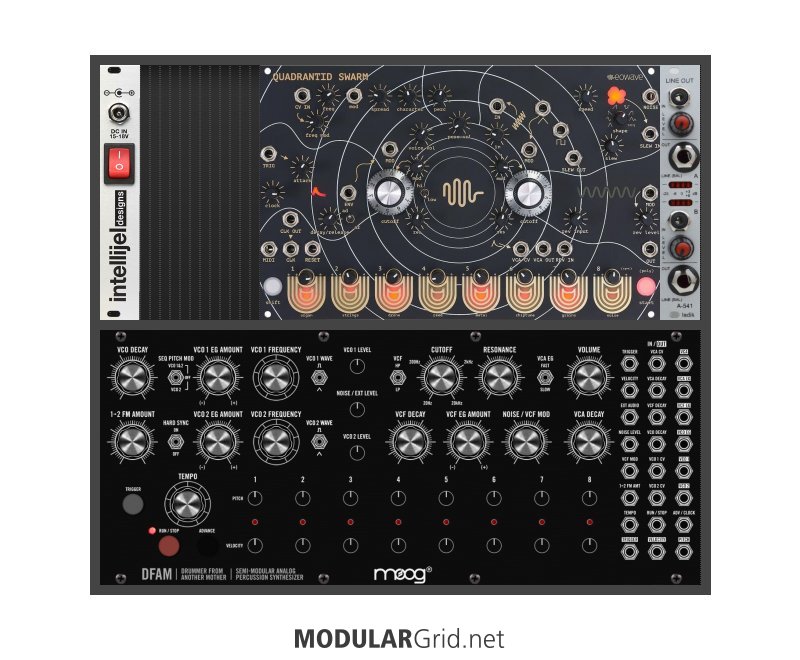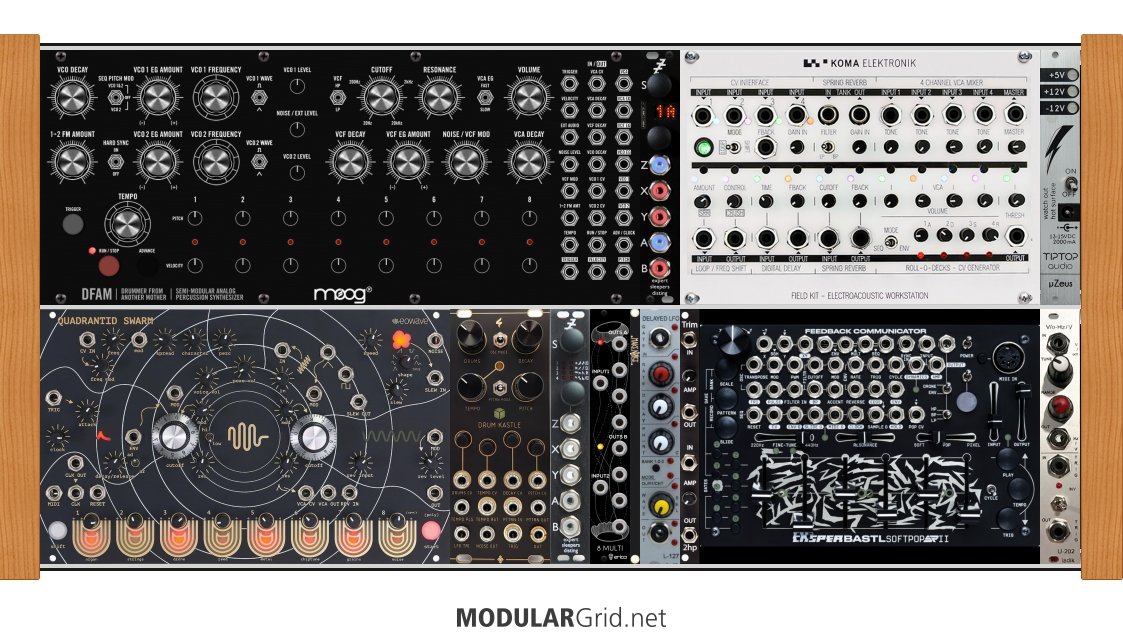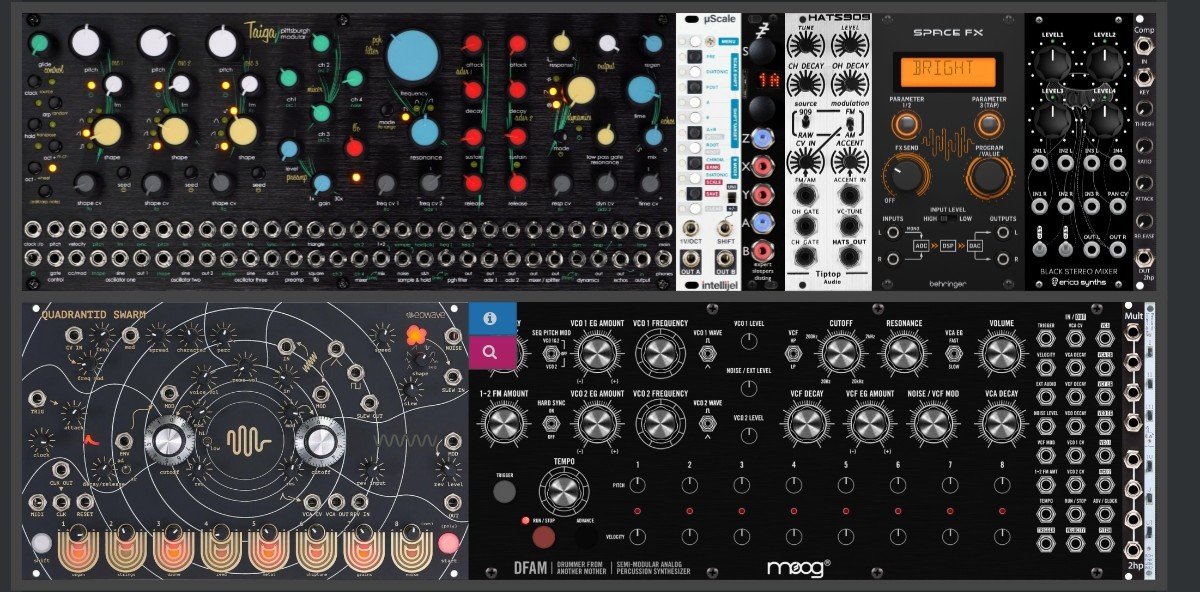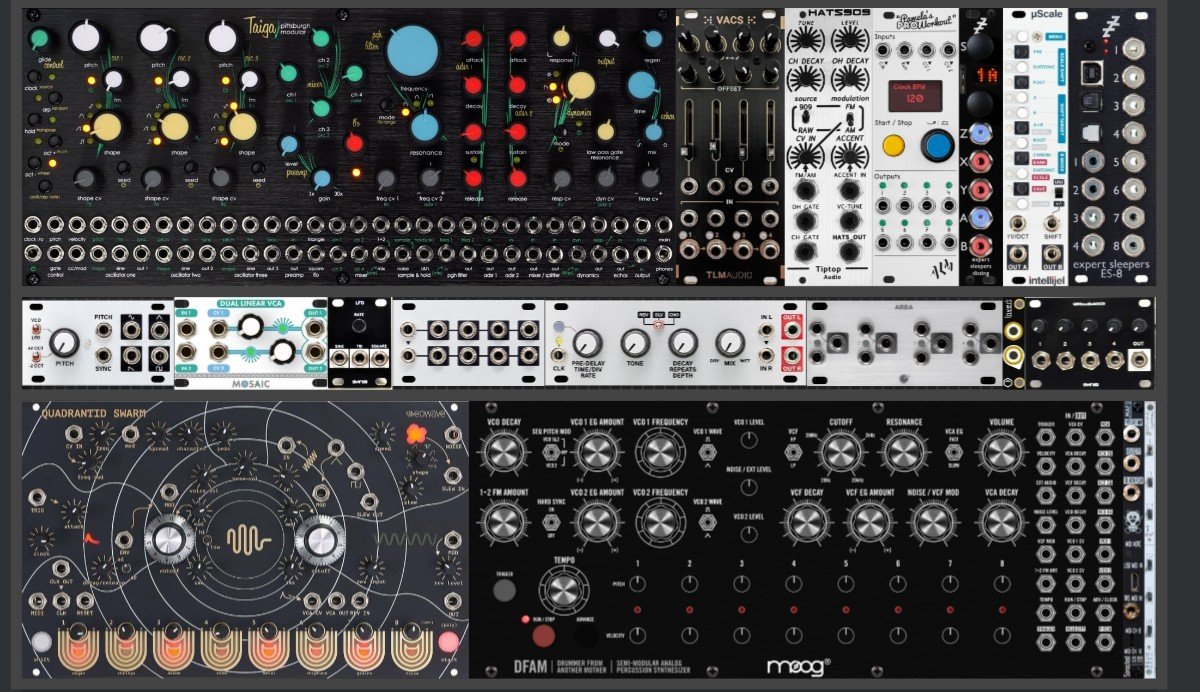Thanks Jim, my space problem is also physical, I don´t have room in my desk lol. I have to think very calmly about opening the Eurorack door, it gives me some vertigo.
remember 1hp = 5.08mm (1/5") so an extra 44hp < 22.5 cm (9") - a little bit of rearrangement (& possibly some creative thinking) is often all that takes to find!
as for 'vertigo' set a starting budget and a continuing budget - ie a % of disposable income, or a set amount each month or whatever - and stick to it it
also charge modules rental for their rack space: let's say your rack works out at 2(USD/EUR/GBP) per hp then for each module you buy you put that * the number of hp the module takes up into a savings account/piggybank/whatever - when your rack is full then you have the funds to pay for the same rack again (not allowing for inflation etc) which makes life easier if money is tight...
I´m curious, is there a proper place to trade or swap modules?
-- GrumoSound
usually this is done by buying and selling used modules - as given the differing prices of modules it can be difficult to work out swaps on...
most 'easily available' modules "should" be priced at between 70 & 80% of the retail price - modules that are not easily available can go for extreme markups - often described as price gouging, but really just 'good' old supply and demand, or seeing if someone is stupid/rich enough to pay that - see mutable instruments/cwejman modules etc etc
buying used can be a way of saving money - ie you should be able to sell most modules in the future for a similar price to what you paid for it, if you need to - so cost really becomes postage... remember there is intrinsic value in your modules - it's not like spending the money on beer, for example, you still have the module and that module has value - but also remember that maybe not 100% of transactions will work out 100% in your favour - which is where paying using PayPal and paying the transaction fees (not friends and family) works in your favour!
as for where - there is the marketplace here, the buy/sell subforum on modwiggler, the monthly trades thread on the modular subreddit, reverb and also ebay/craigslist...
personally I think here and modwiggler are best - reverb and ebay charge fees, the others don't - modwiggler has a 100 post requirement for posting for sale items (to deter scammers) and there's a good trades thread here...
"some of the best base-level info to remember can be found in Jim's sigfile" @Lugia
Utility modules are the dull polish that makes the shiny modules actually shine!!!
sound sources < sound modifiers < modulation sources < utilities


